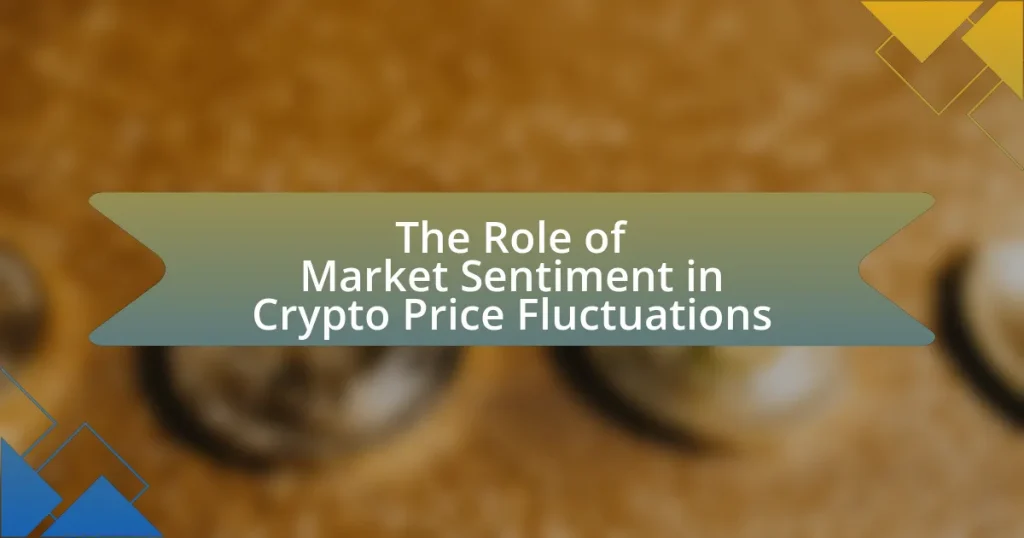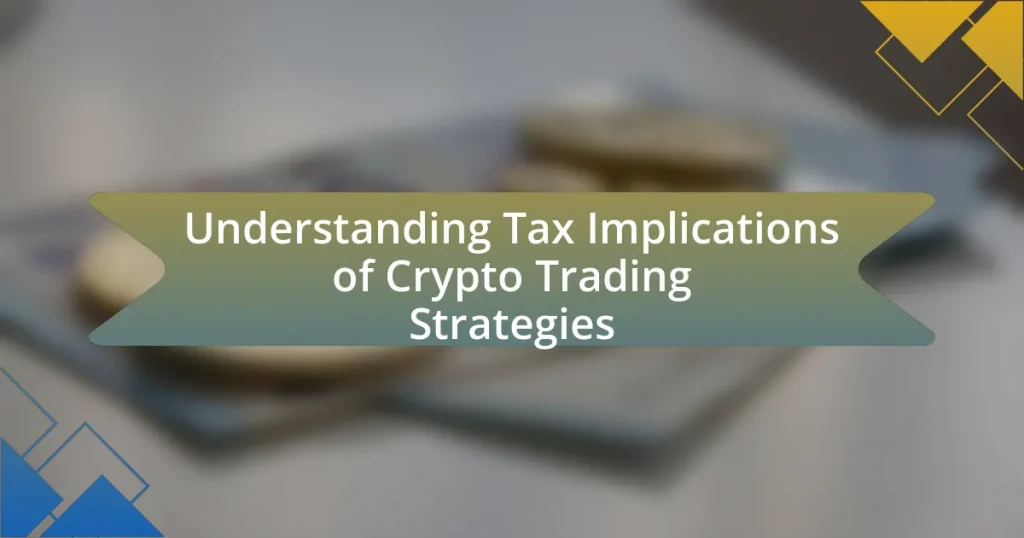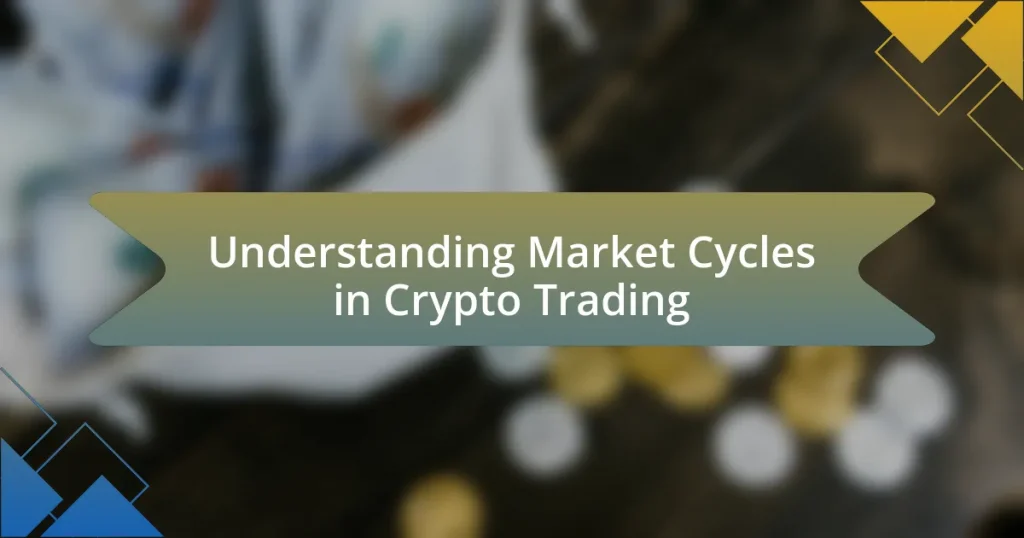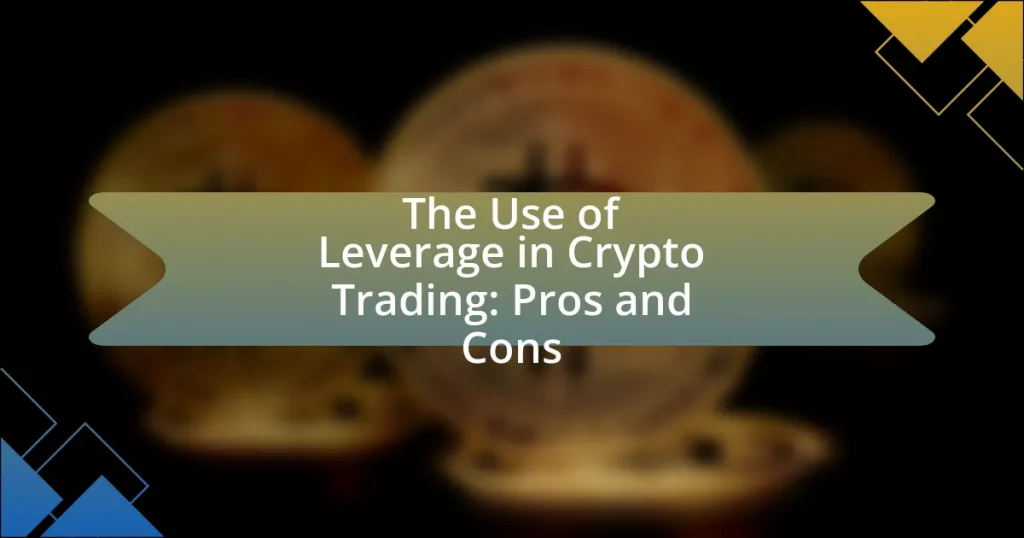Market sentiment is a critical factor influencing price fluctuations in the cryptocurrency market, directly affecting investor behavior and decision-making. Positive sentiment can lead to increased buying activity and price surges, while negative sentiment often results in panic selling and price declines. Key contributors to market sentiment include news events, social media trends, regulatory developments, and market liquidity. Understanding market sentiment is essential for investors, as it can guide trading strategies, help mitigate risks, and enhance decision-making by analyzing emotional and psychological factors that drive market dynamics. The article explores the significance of market sentiment, its indicators, and strategies for leveraging sentiment analysis to improve trading outcomes in the volatile crypto landscape.
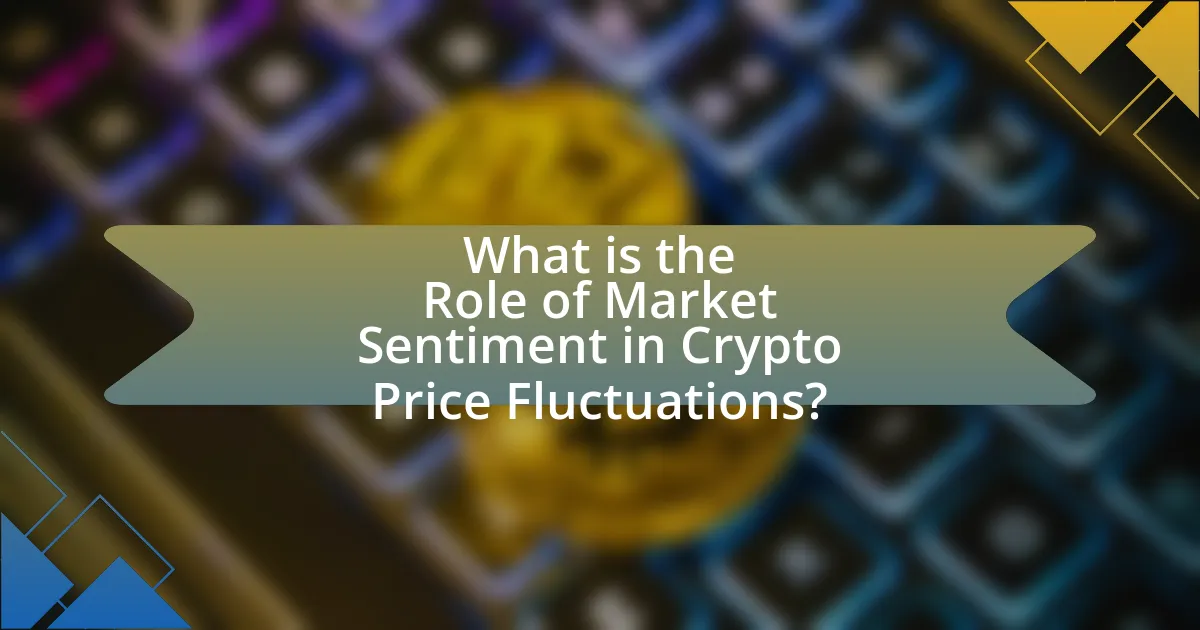
What is the Role of Market Sentiment in Crypto Price Fluctuations?
Market sentiment plays a crucial role in crypto price fluctuations by influencing investor behavior and decision-making. Positive sentiment often leads to increased buying activity, driving prices up, while negative sentiment can result in panic selling, causing prices to drop. For instance, during the 2017 Bitcoin bull run, heightened optimism and media coverage contributed to a surge in prices, reaching nearly $20,000 in December 2017. Conversely, the market crash in early 2018 was largely attributed to negative sentiment following regulatory news and security breaches, leading to a significant decline in prices. Thus, market sentiment directly impacts supply and demand dynamics, which are fundamental to price movements in the cryptocurrency market.
How does market sentiment influence cryptocurrency prices?
Market sentiment significantly influences cryptocurrency prices by affecting investor behavior and decision-making. When sentiment is positive, driven by news, social media trends, or market developments, demand for cryptocurrencies typically increases, leading to price surges. Conversely, negative sentiment can trigger panic selling, resulting in sharp price declines. For instance, a study by the University of Technology Sydney found that social media sentiment correlates with Bitcoin price movements, indicating that public perception can directly impact market dynamics.
What factors contribute to market sentiment in the crypto space?
Market sentiment in the crypto space is primarily influenced by factors such as news events, social media trends, regulatory developments, and market liquidity. News events, including announcements from major exchanges or technological advancements, can lead to rapid shifts in investor confidence. Social media platforms, particularly Twitter and Reddit, play a significant role in shaping public perception and can amplify market movements through viral discussions. Regulatory developments, such as government policies or legal rulings, directly impact investor sentiment by affecting the perceived legitimacy and future of cryptocurrencies. Lastly, market liquidity, which refers to the ease of buying and selling assets, can influence sentiment; low liquidity often leads to higher volatility, which can create fear or excitement among investors.
How do emotions and psychology affect investor behavior in crypto markets?
Emotions and psychology significantly influence investor behavior in crypto markets by driving decisions based on fear, greed, and herd mentality. For instance, during market downturns, fear can lead to panic selling, while in bullish trends, greed may cause investors to overlook risks and chase profits. Research by the University of California, Berkeley, indicates that emotional responses can lead to irrational trading behaviors, resulting in price volatility. Additionally, a study published in the Journal of Behavioral Finance found that social media sentiment can amplify these emotional responses, further impacting market dynamics. Thus, understanding the psychological factors at play is crucial for comprehending investor actions in the volatile crypto landscape.
Why is understanding market sentiment important for crypto investors?
Understanding market sentiment is crucial for crypto investors because it directly influences price movements and investment decisions. Market sentiment reflects the overall attitude of investors toward a particular cryptocurrency, which can lead to significant price volatility. For instance, during the 2017 Bitcoin bull run, positive sentiment drove prices from around $1,000 to nearly $20,000 within a year, showcasing how collective investor emotions can create rapid price increases. Conversely, negative sentiment can lead to sharp declines, as seen in the 2018 market crash, where Bitcoin’s price fell over 80% due to widespread fear and uncertainty. Thus, by gauging market sentiment, investors can make informed decisions, potentially capitalizing on trends and mitigating risks associated with emotional trading behaviors.
What risks are associated with ignoring market sentiment?
Ignoring market sentiment poses significant risks, including poor investment decisions and increased volatility. Investors who disregard market sentiment may fail to recognize shifts in trader psychology, leading to misaligned strategies that do not account for prevailing market emotions. For instance, during the 2018 cryptocurrency market crash, many investors who ignored negative sentiment faced substantial losses as prices plummeted by over 80% from their all-time highs. Additionally, neglecting market sentiment can result in missed opportunities for profit, as understanding sentiment can guide timely entry and exit points in trading. Therefore, failing to consider market sentiment can lead to financial losses and missed gains in the highly volatile crypto market.
How can market sentiment analysis improve investment strategies?
Market sentiment analysis can improve investment strategies by providing insights into the emotional and psychological factors driving market movements. By analyzing social media trends, news articles, and trading volumes, investors can gauge public sentiment and make informed decisions. For instance, a study by Bollen et al. (2011) demonstrated that Twitter sentiment could predict stock market movements, indicating that positive sentiment often correlates with price increases. This data-driven approach allows investors to anticipate market trends, adjust their portfolios proactively, and mitigate risks associated with emotional trading.
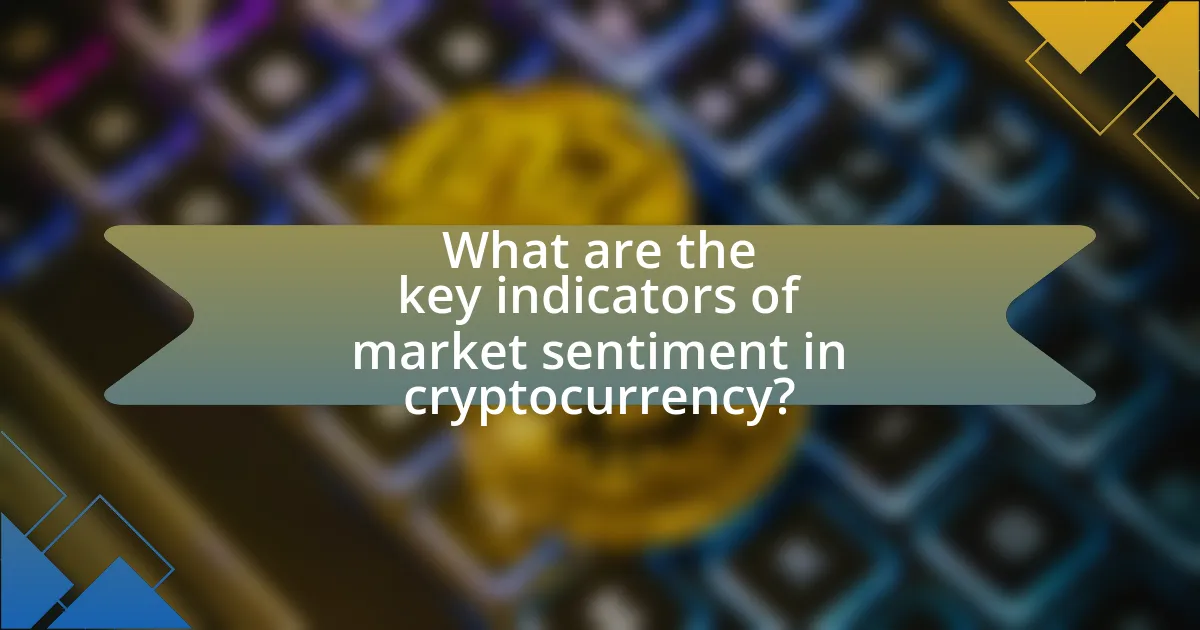
What are the key indicators of market sentiment in cryptocurrency?
Key indicators of market sentiment in cryptocurrency include trading volume, social media activity, and market volatility. Trading volume reflects the level of interest and participation in a cryptocurrency, with higher volumes often indicating positive sentiment. Social media activity, particularly on platforms like Twitter and Reddit, can provide insights into public perception and sentiment trends, as spikes in mentions or discussions often correlate with price movements. Market volatility, measured by price fluctuations, serves as an indicator of uncertainty or confidence among investors; increased volatility typically signals heightened sentiment shifts. These indicators collectively help gauge the overall mood of the market, influencing price fluctuations in the cryptocurrency space.
How do social media trends impact market sentiment?
Social media trends significantly influence market sentiment by shaping public perception and investor behavior. For instance, platforms like Twitter and Reddit can amplify news and opinions, leading to rapid shifts in sentiment that affect trading decisions. A study by the University of Technology Sydney found that a 10% increase in positive social media sentiment correlates with a 3% rise in cryptocurrency prices, demonstrating the direct impact of social media on market dynamics.
What role do influencers play in shaping market sentiment?
Influencers play a significant role in shaping market sentiment by leveraging their reach and credibility to affect public perception and behavior regarding cryptocurrencies. Their endorsements or criticisms can lead to rapid changes in investor confidence, often resulting in price fluctuations. For instance, a tweet from a prominent influencer can lead to immediate spikes or drops in cryptocurrency prices, as seen when Elon Musk’s tweets about Bitcoin and Dogecoin caused substantial market movements. This demonstrates that influencers can create or mitigate fear, uncertainty, and doubt, directly impacting market dynamics.
How can sentiment analysis tools be used to gauge market mood?
Sentiment analysis tools can be used to gauge market mood by analyzing large volumes of text data from social media, news articles, and forums to determine the prevailing emotions and opinions about cryptocurrencies. These tools employ natural language processing techniques to classify sentiments as positive, negative, or neutral, providing insights into investor attitudes and potential market movements. For instance, a study by Bollen et al. (2011) demonstrated that Twitter sentiment could predict stock market trends, indicating that similar methodologies can be applied to cryptocurrency markets. By tracking sentiment changes over time, traders can make informed decisions based on the collective mood of the market, which often influences price fluctuations.
What traditional indicators can be applied to crypto market sentiment?
Traditional indicators that can be applied to crypto market sentiment include the Fear and Greed Index, trading volume, and social media sentiment analysis. The Fear and Greed Index quantifies market emotions by measuring factors like volatility, market momentum, and social media trends, providing a numerical representation of sentiment. Trading volume reflects the level of activity and interest in a cryptocurrency, where higher volumes often indicate stronger sentiment. Social media sentiment analysis utilizes natural language processing to gauge public opinion on platforms like Twitter and Reddit, revealing bullish or bearish trends based on user sentiment. These indicators collectively help in understanding the prevailing market sentiment in the cryptocurrency space.
How do trading volumes reflect market sentiment?
Trading volumes reflect market sentiment by indicating the level of activity and interest among investors in a particular asset. High trading volumes typically suggest strong investor confidence and bullish sentiment, as more participants are willing to buy or sell, often leading to price increases. Conversely, low trading volumes can indicate uncertainty or bearish sentiment, as fewer investors are engaging in transactions, which may result in price stagnation or declines. For example, during significant market events, such as regulatory announcements or technological advancements, trading volumes often spike, reflecting heightened interest and sentiment shifts among traders.
What is the significance of fear and greed indexes in crypto trading?
The significance of fear and greed indexes in crypto trading lies in their ability to gauge market sentiment, which directly influences price movements. These indexes quantify emotions in the market, with a high greed index indicating potential overvaluation and a high fear index suggesting undervaluation. Historical data shows that extreme fear often precedes market recoveries, while extreme greed can signal impending corrections. For instance, during the 2017 Bitcoin bull run, the fear and greed index reached extreme greed levels, correlating with a subsequent market downturn. Thus, traders utilize these indexes to make informed decisions, aligning their strategies with prevailing market emotions.

How can investors leverage market sentiment for better trading outcomes?
Investors can leverage market sentiment by analyzing social media trends, news articles, and market indicators to gauge public perception and emotional reactions towards cryptocurrencies. By utilizing sentiment analysis tools, investors can identify bullish or bearish trends, allowing them to make informed trading decisions. For instance, a study by Bollen et al. (2011) demonstrated that Twitter sentiment could predict stock market movements, indicating that similar methods may apply to cryptocurrency markets. Additionally, monitoring sentiment shifts can help investors anticipate price volatility, enabling them to enter or exit positions strategically.
What strategies can be employed to capitalize on market sentiment?
To capitalize on market sentiment, traders can employ strategies such as sentiment analysis, social media monitoring, and contrarian investing. Sentiment analysis involves evaluating market mood through indicators like the Fear and Greed Index, which quantifies investor emotions and can signal potential market reversals. Social media monitoring allows traders to gauge public opinion and trends, as platforms like Twitter and Reddit often influence crypto prices; for instance, a surge in positive tweets about a cryptocurrency can lead to increased buying activity. Contrarian investing involves taking positions opposite to prevailing market sentiment; historical data shows that when the majority are overly optimistic, it may indicate a market top, while excessive pessimism can signal a buying opportunity. These strategies leverage the psychological aspects of trading, enabling investors to make informed decisions based on collective market behavior.
How can contrarian investing benefit from market sentiment analysis?
Contrarian investing can benefit from market sentiment analysis by identifying overreactions in market behavior, allowing investors to capitalize on mispriced assets. Market sentiment often drives prices away from their intrinsic values, creating opportunities for contrarian investors to buy undervalued assets when sentiment is overly negative or sell overvalued assets when sentiment is excessively positive. For instance, during the 2018 cryptocurrency market downturn, sentiment analysis indicated extreme fear among investors, which historically correlates with market bottoms, enabling contrarian investors to enter positions at lower prices before subsequent recoveries.
What are the best practices for timing trades based on sentiment shifts?
The best practices for timing trades based on sentiment shifts include monitoring sentiment indicators, analyzing social media trends, and utilizing sentiment analysis tools. Monitoring sentiment indicators, such as the Fear and Greed Index, helps traders gauge market emotions and make informed decisions. Analyzing social media trends, particularly on platforms like Twitter and Reddit, provides real-time insights into public sentiment, which can precede price movements. Utilizing sentiment analysis tools, such as Natural Language Processing algorithms, allows traders to quantify sentiment from news articles and social media posts, enhancing their ability to predict market shifts. These practices are supported by studies showing that sentiment can significantly influence price movements in the cryptocurrency market, as evidenced by correlations between sentiment spikes and subsequent price changes.
What common pitfalls should investors avoid regarding market sentiment?
Investors should avoid overreacting to short-term market sentiment, as this can lead to impulsive decisions that negatively impact their portfolios. Emotional responses to market fluctuations often result in buying high during euphoria or selling low during panic, which contradicts the fundamental investment principle of buying low and selling high. Historical data shows that many investors who followed market sentiment trends, such as during the 2017 cryptocurrency boom and subsequent crash, experienced significant losses due to these emotional decisions. Additionally, relying solely on social media trends or news headlines can create a distorted view of market conditions, leading to misguided investment strategies.
How can overreacting to market sentiment lead to poor investment decisions?
Overreacting to market sentiment can lead to poor investment decisions by causing investors to make impulsive choices based on emotional reactions rather than rational analysis. For instance, during periods of market euphoria, investors may buy assets at inflated prices, driven by fear of missing out, which can result in significant losses when prices correct. Conversely, during market downturns, panic selling can occur, leading to the realization of losses that could have been avoided if investors had maintained a long-term perspective. Historical data shows that many investors who react to short-term sentiment often underperform compared to those who adhere to a disciplined investment strategy, as evidenced by studies indicating that emotional trading can lead to a 3% to 4% annual underperformance relative to a passive investment approach.
What are the dangers of following the crowd in crypto trading?
Following the crowd in crypto trading can lead to significant financial losses due to herd mentality, which often results in irrational decision-making. When traders collectively buy or sell based on trends rather than fundamental analysis, they can inflate prices unsustainably, leading to bubbles. For instance, during the 2017 Bitcoin surge, many investors jumped in without understanding the underlying technology, resulting in a sharp decline when the bubble burst. Additionally, following the crowd can cause traders to miss critical market signals, as they may ignore individual research and analysis in favor of popular opinion. This behavior can exacerbate volatility and increase the risk of substantial losses, as seen in various market corrections where panic selling ensued after a collective decision to exit positions.
What practical tips can enhance understanding of market sentiment in crypto?
To enhance understanding of market sentiment in crypto, individuals should actively monitor social media platforms, news outlets, and sentiment analysis tools. Social media platforms like Twitter and Reddit often reflect real-time opinions and emotions of traders, providing insights into market trends. News outlets can influence sentiment through coverage of regulatory changes or technological advancements, impacting investor behavior. Additionally, sentiment analysis tools, such as the Fear and Greed Index, quantify market emotions, allowing traders to gauge overall market sentiment effectively. These methods collectively provide a comprehensive view of market sentiment, which is crucial for making informed trading decisions.










